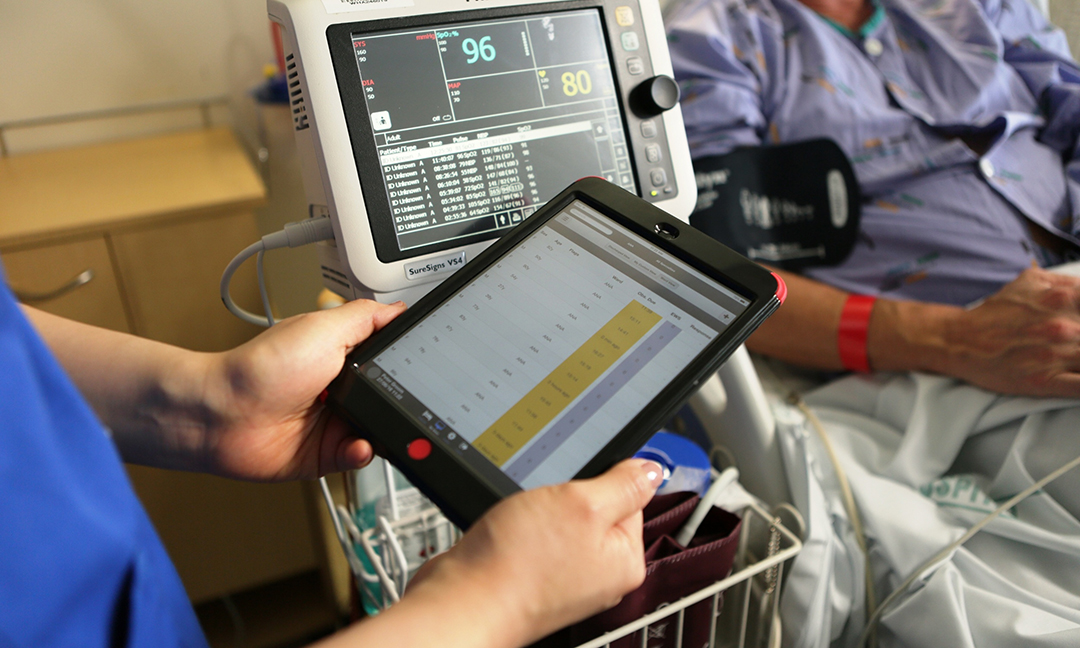Opportunity
Prior to the development of our Mobility Strategy our mobile capability was at a basic level and we were in 'catch-up' mode with:
- basic security on mobile devices
- poor visibility of mobile costs and ad-hoc support for users
- no corporate app store and app development capability
- a governance process designed for traditional IT
Our aim was to develop a Mobile Strategy that would:
- deliver digital capacity into the hands of clinicians
- enable clinicians to manage their day and patient care through the palm of their hand
- provide our staff with access anywhere, everywhere with clinicians no longer bound to fixed computer systems
- improve efficiency in the way our mobile policy, devices, security, apps, costs and user experience are managed
- improve effectiveness by leveraging mobile technology to work smarter, improve safety and patient outcomes and experience
In collaboration with Mobile Mentor we developed a Mobility Strategy with a 12 point plan:
- Implement a single Mobile Policy covering all users, devices and ownership enabling a secure corporate and 'bring your own device' (BYOD) environment and mitigate the security and privacy risks associated with a wide deployment of smart devices
- Deploy an Enterprise Mobility Management Platform that includes securing devices, controls access via the user's identity, manages apps and document storage
- Deploy a Mobile Enterprise Application Platform (MEAP) for centralised management of mobile apps and forms
- Outsource mobile fleet management
- Mobilise nursing staff in the hospitals first, providing a complete solution to make them fully mobile
- Avoid vendor and technology choke points/lock-in by maintaining a device agnostic approach with BYOD and corporate devices
- Invest in Change Management, including impact assessments, communications, training, proactive follow-up and adoption analysis
- Build an App Factory with an iterative development methodology that engages stakeholders in the development process and delivers results in frequent cycles
- Master the technology and operating processes internally first, then commence the journey of using mobile as a channel to engage with patients and the external world
- Extend WiFi coverage and capacity to offset the cost of cellular data services
- Embrace web services where possible and progressively build a mediation layer to facilitate the integration of disparate applications and data sources
- Implement a steering group and governance process to balance supply and demand
Waitemata DHB was the first DHB to fully implement a comprehensive Mobility Strategy.
FREE WI-FI ACROSS ALL OF OUR MAIN SITES
As a vital infrastructure for mobility, Wi-Fi coverage was the first of be addressed. We have made free Wi-Fi available across all of our main hospital and community based sites for our patients and staff to access. Development of our Mobility Strategy and access to Wi-Fi has resulted in significant benefits for patients and our staff:
- Nurses are entering patient data at the bedside / point of care via mobile and fixed devices
- Medications are prescribed electronically by doctors and administered electronically by nursing staff at the point of care
- Patient lists / task lists for doctors and nurses available for viewing on mobile devices
- Access to clinical decision support tools at the point of care, eg checklists, dose calculators, score sheets, guidelines, flow charts
- Full access to health information systems for community health workers while visiting patients in their homes or community sites including ability to add patient notes and images, change appointments, communicate with specialists and hospital-based staff
- Patient and whanau completing questionnaires via mobile systems
Sponsor
- Dale Bramley, CEO (Leapfrog Programme)
Team Members
- Andrew Cave, Health Informatics Manager
- Stuart Bloomfield, CIO
- Robyn Whittaker, i3 Clinical Director of Innovation
- Delwyn Armstrong, i3 Head of Analytics




